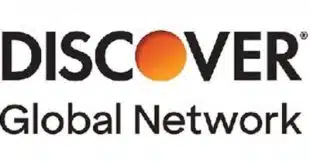Three organizations are leading the development of major faster-payments schemes, any of which would help enable a universal faster-payments system available to U.S. financial institutions. These three are not the only actors, but it is a fair bet one of them, or some combination of them, will achieve the balance of ubiquity, safety, and pricing needed to succeed, even while other, special-purpose niche players will share the market.
The Clearing House
The Clearing House’s approach might be seen as holding true to its owners’ interests, but the owner banks’ interests inherently include being able to send to and receive from all financial institutions. TCH’s view of ubiquity is “whatever the market says” is enough endpoints to meet financial institutions’ and customers’ needs. TCH is pursuing an approach centered on a combination of network reach and the incorporation of financial intermediaries. There is no reason they couldn’t set a pricing protocol that allows primary participants to reprice to secondary participants at a discount, which they would recover through volume.
The most exciting facet of TCH’s approach might seem at first to be its definition of faster: under five seconds. But the most transformative element in the model is the principle that the message is as important as the payment. Unlike with today’s payments networks, messages traveling on the system could be unlimited in size. The network design ensures that large messages will not degrade the speed of the payment part of the transaction, which can bypass a large message traffic jam when necessary.
The constructor, VocaLink Ltd., brings several advantages to the game, not the least of which is the experience of having built such systems in the U.K. A yet-to-be-seen factor is how effectively experience in markets with a limited number of banks can be applied to the U.S. Though the proposed system is feature-rich and technically complex, TCH’s Steve Ledford, who is overseeing the project, emphasizes that “safety and soundness are paramount.”
The Federal Reserve
Sean Rodriquez of the Federal Reserve Bank of Chicago, and a leader of the Fed’s Faster Payments Task Force, puts the development of faster payments in context by observing that “20 years from now, technology we don’t currently know about may be part of the picture. The industry may not have a need for multiple payments platforms.”
The Fed Faster Payments Task Force has wisely adopted an approach that meets the requirements of solutions that work for the most end users and most types of use cases. While the Task Force sees the case for payments that clear in seconds, other definitions of faster are included. For many participants, same day—which NACHA has been promulgating rules for—would be fast enough. The Fed will, in all likelihood, continue as a processor and clearer, and as a monitor of safety and soundness, as faster-payments systems emerge in the U.S.
Ripple Labs, IBM, and Shared-Ledger Players
While Ripple might seem to be an outlier, IBM’s endorsement of shared-ledger payments imprints the shared-ledger technology as sound. Coming out of the gate early, Ripple has demonstrated, in functioning, bank-connected systems, that it can successfully move value rapidly and securely. Ripple’s system currently is focused on cross-border transactions, the very transactions in which faster payments demonstrate the most value. The transactions are large, and counterparty risk and other unknowns of cross-border operations make speed essential.
Ripple’s strategy of eschewing the need for centralized verification is the most elegant way of avoiding bottlenecks. With 80 banks worldwide claimed as active users of the system, Ripple’s biggest problem will be gaining scale and ubiquity. This is where IBM’s entry into shared ledger indirectly acts to legitimize the concept.
Ripple may be on to something in its approach of “moving value as if it was information,” in the words of Nilesh Dusane, vice president of global sales at Ripple.
Whoever ends up as the dominant provider, one thing is sure: Faster payments are coming to the U.S., and probably faster than most expected it.




